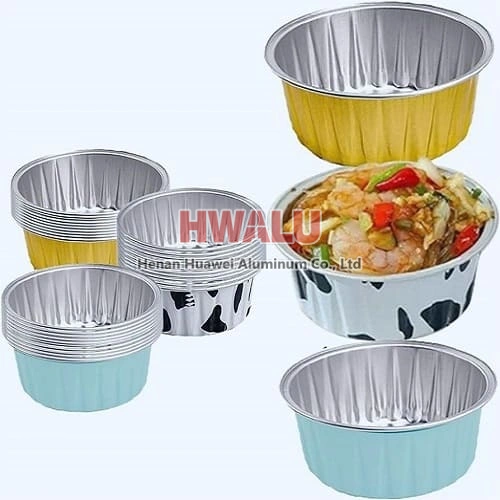What is Aluminum Foil? Aluminum Foil Roll Aluminum foil roll for aluminum foil refers to a raw material used to produce aluminum foil, usually an aluminum foil roll with a certain width and length. Aluminum foil is a very thin aluminum material, its thickness is usually between 0.005 mm and 0.2 mm, and it has good electrical and thermal conductivity and corrosion resistance. Aluminum foil jumbo rolling Aluminu ...
Cigarette aluminum foil parameters Alloy: 3004 8001 Thickness: 0.018-0.2mm Length: can be customized according to customer needs Surface: One side has a high light emissivity, and the other side has a soft matt finish. what is the metallic paper in a cigarette box The metallic paper in cigarette packs is aluminum foil. One is to keep fragrance. Aluminum foil can prevent the smell of cigarette ...
Welcome to Huawei Aluminum, your trusted partner in the world of high-quality Aluminum Foil Rolls for Laminated applications. With a legacy of excellence and innovation, we offer a wide range of aluminum foil products that meet the diverse needs of industries around the globe. About Huawei Aluminum Huawei Aluminum is a renowned manufacturer and wholesaler of aluminum foil products, serving industries such a ...
What is aluminum foil for cake cup? Aluminum foil can be used for many purposes in baking, such as making cupcake cups or liners. Aluminum foil cake cups are cup-shaped containers used for baking cakes, cupcakes, or cupcakes, usually made of aluminum foil. Cake cup aluminum foil is used to wrap the bottom and sides of the cake cup to maintain the shape of the cake when baking, prevent sticking, and make the ca ...
What is aluminum foil for pallets Aluminum tray foil is an aluminum foil material used to wrap and cover food trays. This aluminum foil usually has a larger area and a thinner thickness to fit the size and shape of the tray and can resist high temperature and humidity to protect food from contamination and damage. Aluminum foil for trays is widely used in the food service industry, especially in hotels, resta ...
In the production process of aluminum foil, there are multiple processes such as rolling, finishing, annealing, packaging, etc. The interlocking production process, any problem in any link may cause aluminum foil quality problems. The quality defects of the purchased aluminum foil products will not only affect the appearance, but also directly affect the quality of the products produced, and even more directly ca ...
1. Chemical composition: The alloy grades of aluminum foil for heat exchange fins mainly include 1100, 1200, 8011, 8006, etc. From the perspective of use, air conditioners do not have strict requirements on the chemical composition of aluminum heat exchange fins. Without surface treatment, 3A21 aluminum alloy has relatively good corrosion resistance, high mechanical properties such as strength and elongation, ...
Aluminum foil has good moisture-proof properties. Although pinholes will inevitably appear when the thickness of the aluminum foil is less than 0.025mm, when observed against light, the moisture-proof properties of aluminum foil with pinholes are much stronger than those of plastic films without pinholes. This is because the polymer chains of plastics are widely spaced apart from each other and cannot prevent wat ...
Nowadays, many female companions attach great importance to beauty and skin care. Women who are busy with their lives and work often use facial masks for skin care, which can provide sufficient nutrients for the facial skin and make the skin healthier and more energetic. With the increasing demand for facial masks, many manufacturers now make and produce facial masks. In order to improve the storage time of facia ...
Aluminum foil is a good heat insulator because it is a poor conductor of heat. Heat can only be transferred through a material by conduction, convection, or radiation. In the case of aluminum foil, heat transfer occurs primarily through radiation, which is the emission of electromagnetic waves from the surface of an object. Aluminum foil is a shiny, reflective material that reflects radiant heat back towards i ...
Degreasing pollution is mainly manifested on the surface of the aluminum foil in 0 state. After the aluminum foil is annealed, it is tested by the water brushing method, and it does not reach the level specified in the water brushing test. The aluminum foil that requires the water-washing test is mainly used for printing, composite with other materials, etc. Therefore, the surface of the aluminum foil must be ...







